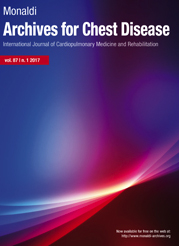Reduction of inappropriate shock rate through signal filtering (smart-pass) in patients with implantable subcutaneous cardioverter-defibrillator: a systematic review and meta-analysis
All claims expressed in this article are solely those of the authors and do not necessarily represent those of their affiliated organizations, or those of the publisher, the editors and the reviewers. Any product that may be evaluated in this article or claim that may be made by its manufacturer is not guaranteed or endorsed by the publisher.
Authors
Subcutaneous implantable cardioverter-defibrillators (S-ICD) are effective in protecting patients against sudden death but expose them to a higher risk of inappropriate shock (IAS). We performed a systematic search of studies published between January 2010 and December 2019 assessing IAS due to cardiac oversensing by the selection process (PRISMA) and identified 17 eligible articles. Fifteen studies were observational, and two studies were retrospective. For the meta-analysis, the final population included 6111 patients: 3356 without SMART pass (SP) filter (group 1) and 2755 with SP filter (group 2). 1614 shocks (appropriate shocks plus IAS) were registered (1245 in group 1 and 369 in group 2). The random effects meta-analysis estimated an overall IAS rate of 7.78% (95% confidence interval: 4.93-10.64) with substantial variability between studies (I square=96.05%, p<0.001). The IAS rate was 10.75% (95% confidence interval: 8.49-13.02) for group 1 and 3.61% (95% confidence interval: 1.36-5.86) for group 2 (p<0.001). Third-generation S-ICD technology with SP filters reduced the risk of cardiac signal-related IAS.
How to Cite

This work is licensed under a Creative Commons Attribution-NonCommercial 4.0 International License.






